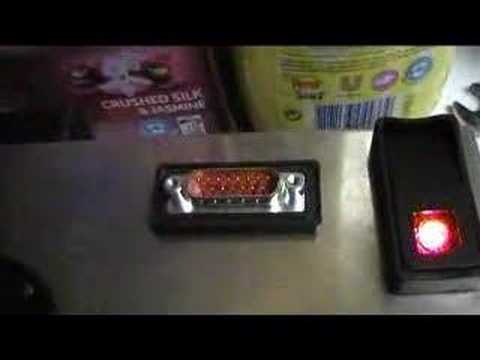Wow, lots of interesting information. Drone, the motor your recommended looks great, but I'm afraid my mount will be more like 15 to 20 pounds with camera attached (these are full size broadcast cameras). Will I need to size up that motor a bit for the extra weight? And I suppose two matching motors would work best for pan/tilt?
There are other motors that you can choose from. You should start calculating out your speed and torque requirements - you have a torque requirement now (20lbs), now you need a speed requirement. There are varying beliefs a to what is "fast" =)
For example, there's this motor, that with a 2" gear/pulley on it will result in 36.5 lb's of torque: http://servocity.com/html/4_rpm_gear_motor.html
If geared 1:1 at 4RPM, it would result in a max speed of (360*4)/60 = 24 degrees per second. That would make it take 15 seconds to do a complete 360, or 7.5 to cover a 180 degree field. Of course, your lens will also have an FOV that would be taken into account, but I think this gives you what you need to consider.
Also, remember, that increasing the length of your lever increases the torque output - so if you go to, say, a 4" pulley, you'll get nearly 2x as much torque out of it.
Here's another motor I might suggest, I have one of these at home, and while they are loud, they do the job quite well:
http://servocity.com/html/dayton_gear_motors__12v_.html
If you look at the 8.75 RPM one, that's 41lbs of torque per inch of lever! So, using a 2" drive gear (again, the lever is half the diameter of the gear, or 1") connecting 1:1 to a 2" driven gear (or pulley, etc.) - you could move 41lbs of camera at the rate of 52.5 degrees per second. I'm pretty sure that would meet most requirements - you would be able to sweep a 180 degree field of view in just over three seconds. If you wanted it to go twice as fast, but retain the same torque, you could do a little trickery in the drive-train:
Motor->4" gear/pulley->2" gear/pulley.
What would happen is here that you're doubling the lever (4" pulley == 2" lever) and thereby doubling the torque. Then, you're halving the relationship between the drive gear and the driven gear, doubling speed and halving torque. So, you'd end up close to your 41lbs (you loose some to inefficiency in the gears/pulleys) but you'd be at 17.5 RPM, or 105 degrees/second.
I'd suggest making a spreadsheet - put in each motor's characteristics, including power consumption, and play with different gear ratios/initial gear sizes to calculate the right amount of torque vs. cost vs. speed vs. power consumption. It's often hard to keep it all in your head, and I usually find new combinations that I hadn't considered before.
You can definitely save money by determining exactly what you need vs. something that's big enough to handle anything grin
As for matching motors? It's not a requirement, no. In fact, you would probably end up with a slightly more powerful motor for the pan than for the tilt, given the pan has to move the tilt mechanism as well. However, it would probably make life easier on you to order two of everything than two different sets. =)
!c
